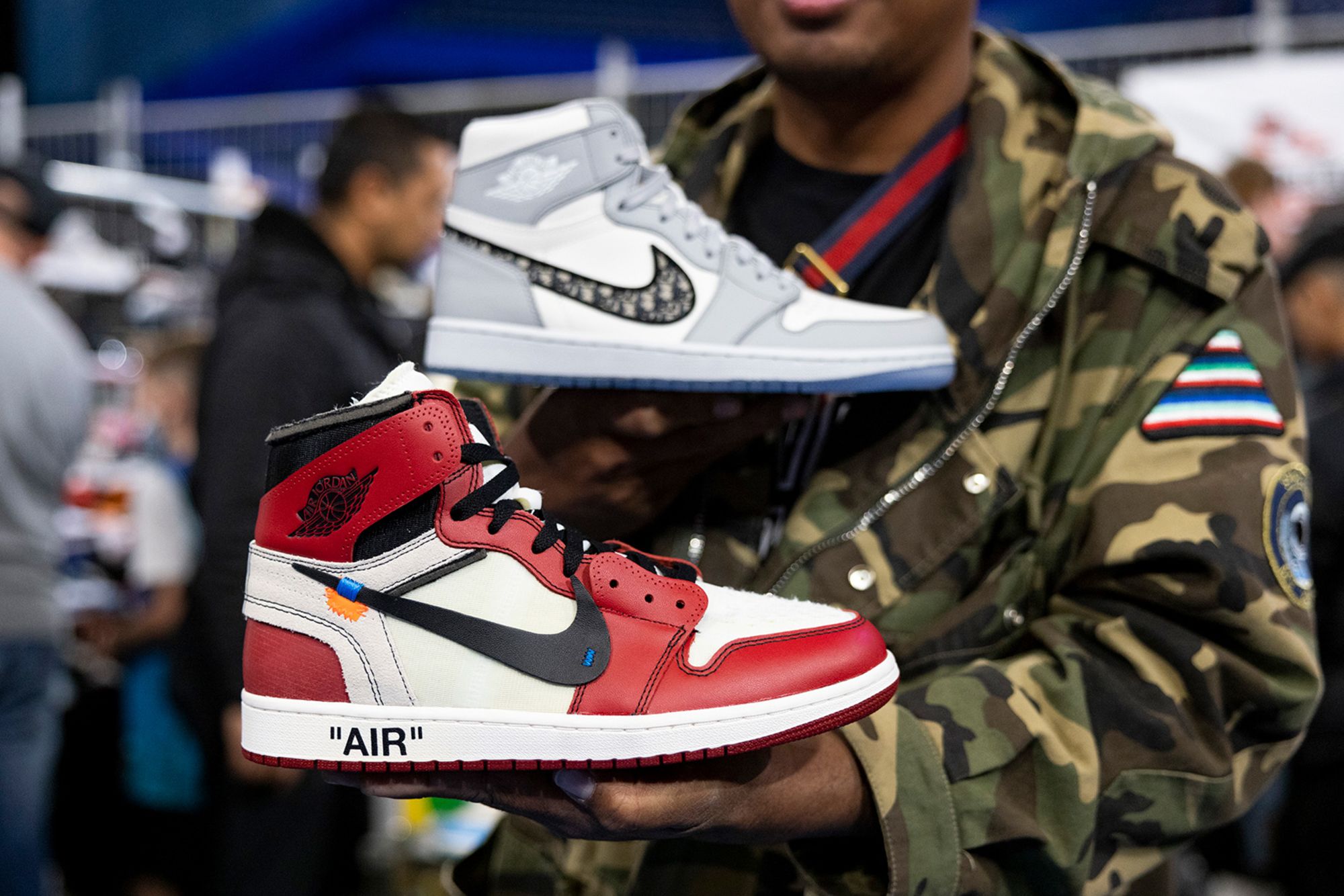Editor’s Note: This article is adapted from eighth episode of “Downside Up” podcast, hosted by CNN Editor-at-large Chris Cillizza.
When my two boys have free time, they want to go to the mall. No, they aren’t shop-a-holics. They want to go gaze at sneakers.
These aren’t the sneakers you find in Foot Locker. They are limited editions – usually Nikes – that range in price from $250-$900 or more. There’s the Chunky Dunkys, a collaboration between Nike and ice cream maker Ben and Jerry’s. And the Space Jam Jordans. And dozens of other pairs of shoes – all of which they know by name and all of which are very, very expensive.
When they aren’t at the mall ogling these shoes, they are online doing the same – through sites like GOAT and StockX.
All of which made me wonder: How did this sneaker culture develop? After all, when I was a kid, I wanted Jordan brand shoes too. But they cost $100 and I would wear them until they fell apart. Now, my boys pine for shoes that cost ten times that – and if they ever got them, they would never even think of scuffing them up by wearing them.
It all started during the Industrial Revolution, when the very wealthy began to find they had leisure time on their hands, Elizabeth Semmelhack, who runs the Bata Shoe Museum in Toronto, told me for the latest episode of my podcast “Downside Up.”
“These ‘nouveau riche’ industrialists wanted to show that they had arrived. And so, the ancient game of tennis was revived,” explained Semmelhack. “But the problem with lawn tennis – one, lawn tennis lawns are extremely expensive, so they didn’t want people running around in leather shoes and digging up the turf. And two, when you play on lawn, you can get your dainty feet wet. So rubber soled shoes, the sneaker, was invented as something that the wealthy could wear as they pursued these wealthy pleasures of lawn tennis.”
Rubber was, at the time, quite expensive and so having shoes with rubber soles was seen as a status symbol.
(Sidebar: The word “sneakers” came into the language in the 1870s because the rubber-soled shoes allowed kids to “sneak’ around without being detected.)

Sneakers as a fashion – and status – statement in our modern era began with two major events in the 1980s.
First, basketball phenom Michael Jordan signed a sneaker deal with Nike in 1984.
Then the rap group Run-DMC came out with their song “My Adidas” celebrating their shoes in 1986.
“Jordan and Nike, the timing was just perfect. It was literally just the right time for that to explode,” Jacques Slade, a sneakerhead and shoe blogger, told me. The collaboration between the world’s best basketball player and the world’s biggest sneaker company was “the inflection point of basketball hitting the up slope on the graph and sneakers hitting the up slope on the graph at the same time.”
But even then, for most of us, sneakers were something you wore – not something you collected.
The development of the internet – and in particular sites like eBay – changed all that. Suddenly, older versions of shoes could be purchased – and collected. And sneaker companies, Nike especially, leaned into the trend.
“I do think that one of the things that really changed the desirability around sneakers was when Air Jordan came out with a different model every single year,” said Semmelhack. “And so, given that the Air Jordan, now we call it the 1, was so different from the 2, so different from the 3, and the 4, and the 5 and the 6, that, that helped justify collecting, because if you have the 1, 2, 3, 4, well, then the 5 comes out you got to add it to your collection.”
And Semmelhack doesn’t see sneaker collecting going away any time soon. In fact, she envisions it launching into the metaverse.
“Clothing is one of the principal ways that we make alliances, [how] we express who we are,” she said. “And so, it’s no surprise to me that you might have a closet of virtual sneakers to put on your avatar as you go into (the metaverse).”

